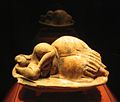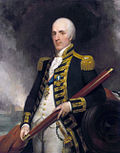Showcased articles


These are showcased articles related to Malta which appear on Portal:Malta.
For a full list of Malta related SAs sorted by topic see Portal:Malta/Showcased article/List.
The Siege of Malta (also known as the Great Siege of Malta) took place in 1565 when the Ottoman Empire invaded the island, then held by the Knights of St. John.
The siege is considered one of, if not the greatest, in military history and, from the point of view of the defenders, the most successful. However, it should not be viewed in isolation. Rather, it was the climax of an escalating contest between the Spanish and Ottoman empires for control of the Mediterranean, a contest that included a previous attack on Malta in 1551 by the Turkish corsair Turgut Reis and which in 1560 had resulted in the utter destruction of the Spanish armada by the Turks at the battle of Djerba.
The Siege of Malta did little, if anything, to alter the balance of power in the Mediterranean, but it was the first true defeat of the Ottoman Empire in a century and lifted European morale immeasurably. (more...)Air Malta is the national airline of Malta. It operates services to around 50 destinations in Europe and North Africa. The airline is based at Malta International Airport, Luqa, with hubs at Birmingham International Airport and Bristol International Airport, England.
In July 2002, Air Malta announced that its new fleet of aircraft would be from the European aeroplane manufacturers Airbus. The new fleet comprises A319s and A320s and deliveries have already begun.[when?] The last plane will be delivered in 2007,[needs update] thus reducing the average age of fleet to around 2.5 years. Air Malta has concluded over 191 interline ticketing agreements with other IATA airlines. It also has a codeshare agreement with Qantas from Sydney–Singapore–London–Malta.
According to the Association of European Airlines quarterly review of May 2006, Air Malta is the airline that loses the least amount of passenger baggage. The amount of baggage lost in the first quarter of 2006 was 4.1 bags missing per 1000 passengers. Air Malta is owned by the Maltese government (98%) and private investors (2%). Air Malta also has a 25% shareholding in Medavia. The airline employs 1,547 staff. (more...)The Malta Summit was a meeting between U.S. President George H. W. Bush and Soviet leader Mikhail Gorbachev, which took place between December 2-3 1989, just a few weeks after the fall of the Berlin Wall. It was their second face-to-face encounter following a meeting that included then President, Ronald Reagan, in New York in December 1988. News reports of the time referred to the Malta Summit as the most important since 1945, when Churchill, Stalin and Roosevelt agreed on a post-war plan for Europe at Yalta. (more...)
The Malta Convoys were a series of Allied supply convoys to sustain the Mediterranean island of Malta during World War II. The convoys were strongly opposed by Italian and German sea and air forces.
Malta's geographical position, halfway between the strategic British bases at Gibraltar and Alexandria, close to the Sicilian Channel between Sicily and Tunis and on the sea route between Italy and its possessions in Libya, made it a vital base for control of the Mediterranean sea routes. For Britain this was the short route, via the Suez Canal, to its colonies in India, East Africa and the Far East and also to the major oil producers of Iraq and Iran.
During the first year of the war, however, this region was a military backwater. Much of the coast was under Allied control - either French or British: the rest was neutral. Moreover, the British and French fleets dominated; the only other effective regional naval power was Italy, but at this time she was neutral. As a result, British defences on Malta were neglected. (more...)The SS Ohio was an oil tanker. When built for the Texas Oil Company (now Texaco), she was the largest oil tanker in the world. She was launched on April 20, 1940 at Sun Shipbuilding Yard in Chester, Pennsylvania, United States. SS Ohio was capable of doing over 16 knots (30 km/h) at sea.
Ohio was the most important survivor of Operation Pedestal, a convoy sent to Malta in August 1942 during the Second World War.
During the convoy's journey she was torpedoed by Italian submarine Axum and hit several times by bombs, and by a Junkers Ju 87 dive-bomber which crashed onto her deck. With a wrecked engine room and nearly broken in half, she was abandoned and reboarded twice but was eventually towed into Grand Harbour whilst sandwiched between two destroyers (HMS Penn and Ledbury) to deliver most of her original cargo of 12,000 tons of diesel and kerosene to the beleaguered island. Her captain, Dudley William Mason, was subsequently awarded the George Cross.
After Ohio reached Malta, the ship broke in two from the damage it had sustained. There were insufficient shipyard facilities to repair the tanker, so the two halves were used for storage, and later barracks facilities for Yugoslavian troops. On 19 September 1946, the two halves were towed ten miles (16 km) off the coast, and sunk with naval gunfire. The aft section sank first, followed by the forward half. (more...)The Ħal-Saflieni Hypogeum, Paola, Malta, is a subterranean structure excavated c. 2500 B.C. Thought to be originally a sanctuary, it became a necropolis in prehistoric times. It is the only prehistoric underground temple in the world. The Hypogeum was depicted on a 2 cents 5 mils stamp issued in the Maltese Islands in 1980 to commemorate the acceptance by UNESCO of this unique structure in the World Heritage Site list. It was closed to visitors between 1992 and 1996 for restoration works.
It was discovered by accident in 1902 when workers cutting cisterns for a new housing development broke through its roof. The study of the structure was first entrusted to Father Manuel Magri of the Society of Jesus, who directed the excavations on behalf of the Museums Committee. Magri unfortunately died in 1907, before the publication of the report. Following Magri's sudden death, excavation resumed under Sir Temi Zammit. (more...)Fort Saint Elmo is a fortification in Valletta, Malta. It stands on the seaward shore of the Sciberras Peninsula that divides Marsamxett Harbour from Grand Harbour, and commands the entrances to both harbours. Prior to the arrival of the Knights of Malta in 1530, a watchtower existed on this point. Reinforcement of this strategic site commenced in 1533, and the fort itself began to be built in 1552. By the time of the Ottoman Siege of Malta in 1565, this fortification had been reinforced and extended into a modest star fort. (more...)
The Knights Hospitaller (also known as the Sovereign Order of Saint John of Jerusalem of Rhodes and of Malta, Knights of Malta, Knights of Rhodes, and Chevaliers of Malta) is an organization that began as an Amalfitan hospital founded in Jerusalem in 1080 to provide care for poor and sick pilgrims to the Holy Land. After the conquest of Jerusalem in 1099 during the First Crusade it became a Catholic military order under its own charter, and was charged with the care and defense of pilgrims to the Holy Land. Following the loss of Christian territory in the Holy Land, the Order operated from Rhodes, over which it was sovereign, and later from Malta where it administered a vassal state under the Spanish viceroy of Sicily. Although this state came to an end with the ejection of the Order from Malta by Napoleon, the Order as such survived.
The Sovereign Military Hospitaller Order of St. John of Jerusalem of Rhodes and of Malta (abbreviated SMOM) is considered to be the main successor to this tradition. The Order of the Dames of Malta is the female auxiliary to the Knights. (more...)
The Flag of Malta is a basic bi-colour, with white in the hoist and red in the fly: colours from the blazon of the arms of Malta. Tradition states that the colours of the flag were given to Malta by Count Roger of Sicily, in 1091. The banner of Count Roger was a chequered red and white flag and he gave a set from this banner. However, many say that this claim is only a legend developed through time.(more...)
The George Cross was awarded to the island of Malta by King George VI in a letter dated 15 April 1942 to the island's Governor Lieutenant-General Sir William Dobbie, so as to "bear witness to the heroism and devotion of its people" during the great siege it underwent in the early parts of World War Two. The George Cross is woven into the Flag of Malta and can be seen wherever the flag is flown. While Italian and German bombers brought havoc to the Maltese islands, the problem of supplies was soon felt. An invasion threat in July 1941 ended in complete failure when coast defenders spotted E-boats of the Italian Decima Flottiglia 10th Fleet MAS. Whilst people suffered hunger, a final assault to neutralise the island was ordered by the German Field Marshal Albert Kesselring.(more...)
The University of Malta (Maltese L-Università ta' Malta) is the highest educational institution in Malta. It offers undergraduate Bachelor's Degrees, which last between three and five years, and postgraduate Master's Degrees that last two years full-time.
The University is one of the oldest in Europe and was originally a Catholic university. Its origins dates back to 1592 when the Collegium Melitense was founded by the Bishop Garagallo. Originally the University was run by the Jesuits. After the Jesuits were expelled from the Maltese Islands in 1768, the University was taken over by the state. After Napoleon conquered the island in the 1798, the university was briefly abolished in favour of a French educational institution. However, after the French were forced to leave in 1800, the islands became a British protectorate and the University was reestablished by Sir Alexander Ball. In 1938, King George VI gave it the title of The Royal University of Malta. The word "Royal" was subsequently removed from the name of the university, when Malta became a republic in 1974. (more...)
St. John's Co-Cathedral, located in Valletta, Malta, was built by the Knights of Malta between 1573 and 1578 having been commissioned in 1572 by Grand Master Jean de la Cassière as the conventual church of the Order of the Knights Hospitaller of St John, known as the Knights of Malta. The Church was designed by the Maltese military architect Gerolamo Cassar who has designed several of the more prominent buildings in Valletta. The severe exterior of the Cathedral, built immediately after the ending of the Great Siege of 1565, is reminiscent of a military fort.The inside is in sharp contrast to the facade as the extremely ornate interior decorated in the height of the Baroque period. The inside was largely decorated by Mattia Preti, the Calabrian artist and Knight. Preti designed the intricate carved stone walls and painted the vaulted ceiling and side altars with scenes from the life of St John. Noteworthy is the fact that the carving was all undertaken in-place (in-stu) rather than being carved independently and then attached to the walls (stucco). The Maltese limestone from which the Cathedral is built lends itself particularly well to such intricate carving.
Near the main entrance one finds the monument of Grandmaster Fra Marc'Antonio Zondadari from Siena. He was the nephew of Pope Alexander VII.
(more...)Jean Parisot de Valette (born in 1494[?]; died in Malta, 21 August 1568) was born into a noble family in Quercy. He was a Knight of St. John all his adult life, joining the order in the Langue de Provence, and fought with distinction against the Turks at Rhodes and again at Malta. He became Grand Master of the Knights Hospitaller on 21 August 1557.Universally referred to as "La Valette," he was never actually called that during his lifetime. He was simply Jean de Valette, nicknamed Parisot.(The mistake arose some decades after his death when people began to confuse him with the city named in his honor, "La Citta Valletta.") Although his birth year is usually given as 1494, both chroniclers of the Great Siege of Malta, Francisco Balbi di Correggio and Hipolito Sans, say he was 67 at the time, implying that he was born in 1498. In his history of the Order of St John, the 18th-century historian, the Abbe Vertot (whose history is largely based on - but often confuses - the earlier one of Giacomo Bosio), indicates that Valette was indeed the same age as both Suleiman I and Lala Mustafa (the commander of the Ottoman land forces), which would mean that he was actually 70 years old at the time of the Siege. (more...)
The għonnella, pronounced "awe-nel-la" (pl. għonnielen, pronounced "awe-nee-lan"), sometimes referred to as a Faldetta, was a form of women's head dress and shawl, or hooded cloak, unique to the Mediterranean islands of Malta and Gozo. It was generally made of cotton or silk, and usually black or some other dark colour, although from the sixteenth century onwards, noble women and women from wealthier households frequently wore white or brightly coloured għonnielen. The għonnella covered the head, and framed but did not cover the face. The upper part of the għonnella was starched quite stiffly, and given a broad, rounded frame, formed by means of a board, cane, or whalebone. This gave the għonnella a mysterious but alluring, sail-like appearance. From a practical perspective, this broad bonnet captured much needed cooling breezes during the hot and humid Maltese summer. On cooler days, the wearer could wrap the għonnella around her face more tightly, by making a slight adjustment. The lower part of the għonnella could be worn loosely draped around the wearer's bodice and hips, or more tightly wrapped in the case of inclement weather. It would typically fall to mid-calf length. While walking, the wearer would hold one or both sides of the għonnella clasped in her right hand. (more...)
The Manoel Theatre (Teatru Manoel, in Maltese) is reputed to be Europe's third-oldest working theatre, and the oldest working theatre in the Commonwealth of Nations. Located on Old Theatre Street (Triq it-Teatru l-Antik) in Valletta, it is now Malta's National Theatre and home to the National Orchestra of Malta (Orkestra Nazzjonali). The Manoel Theatre is a small, six-hundred and fifty seat venue, with a lavish, oval-shaped auditorium, three tiers of boxes constructed entirely of wood and decorated with 22-carat gold leaf, and a pale blue, trompe-l'œil ceiling that resembles a round cupola. Hidden behind an austere facade that is fully in keeping with Valletta's Mannerist architecture, is a richly adorned, glorious Rococo interior. Despite numerous alterations over the years, it retains many of its old architectural features, such as the white Carrara marble staircase, shell-shaped niches, and Viennese chandeliers. Two water reservoirs beneath the floor create an acoustic environment that is so precise, that the hushed page-turnings of an orchestra conductor can be heard clearly throughout the auditorium. (more...)
Grand Harbour is a natural harbour on the island of Malta. It has been used as a harbour since at least Roman times. The natural harbour has been greatly improved with extensive docks and wharves, and has been massively fortified. The harbour mouth faces north east and is bounded to the north by St. Elmo's Point and further sheltered by an isolated breakwater and is bounded to the south by Ricasoli Point. Its north west shore is formed by the Sceberras peninsula, which is largely covered by the city of Valletta and its suburb Floriana. This peninsula also divides Grand Harbour from a second parallel natural harbour, Marsamxett Harbour. The main waterway of Grand Harbour continues inland almost to Marsa. The south eastern shore of the harbour is formed by a number of inlets and headlands, principally Rinella Creek, Kalkara Creek, and French Creek, which are covered by Kalkara and the Three Cities: Cospicua, Vittoriosa, and Senglea. (more...)















